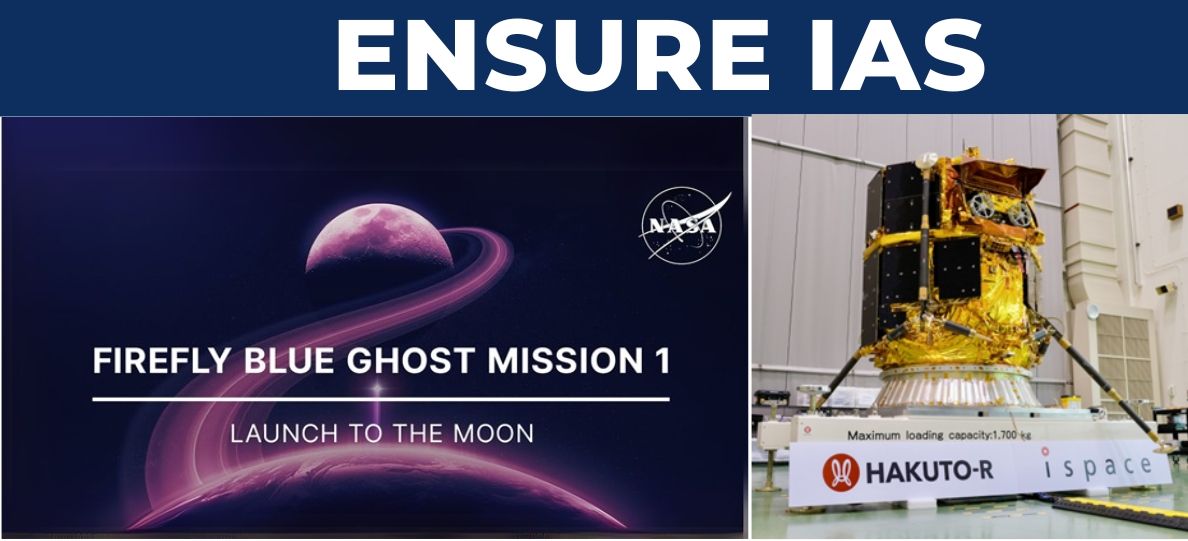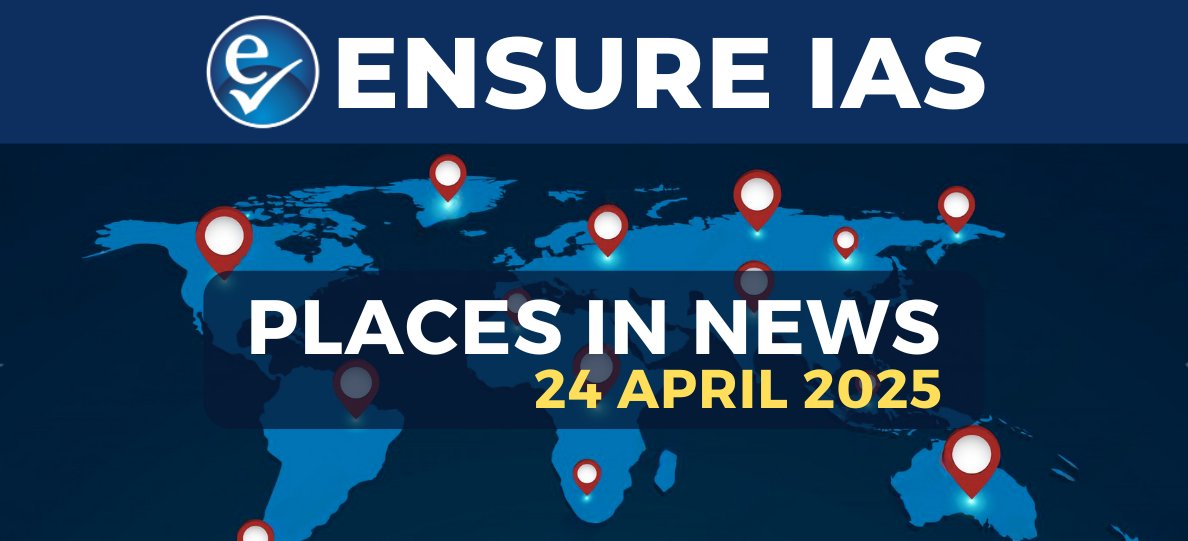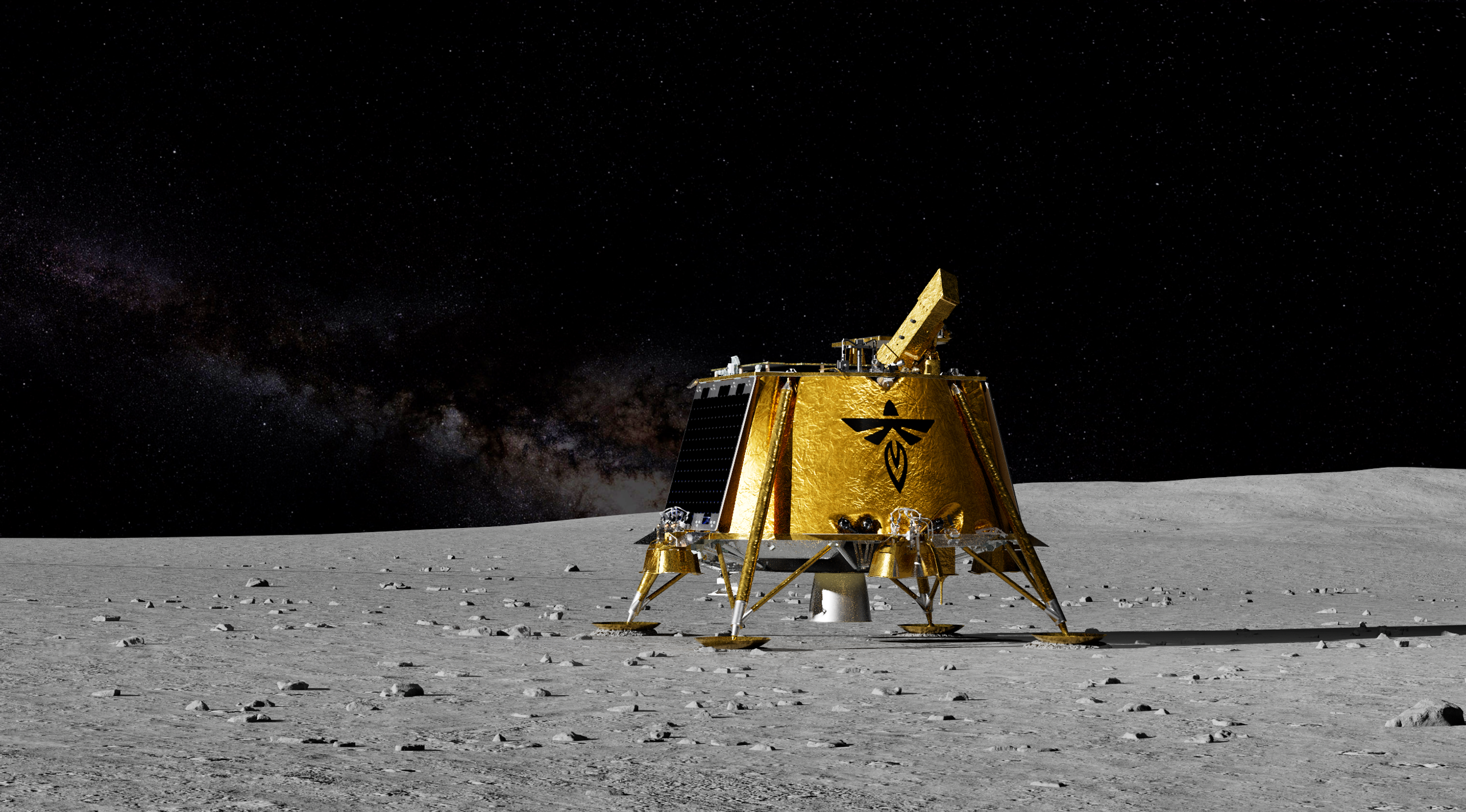- Courses
- GS Full Course 1 Year
- GS Full Course 2 Year
- GS Full Course 3 Year
- GS Full Course Till Selection
- CSAT
- 5 LAYERED ARJUNA Mentorship
- Public Administration Optional
- Online Program
- GS Recorded Course
- NCERT Batch
- Polity Module Course
- Geography Module Course
- Economy Module Course
- AMAC Module Course
- Modern India, Post Independence & World History Module Course
- Environment Module Course
- Governance Module Course
- Science & Tech. Module Course
- International Relations and Internal Security Module Course
- Disaster Management Module Course
- Ethics Module Course
- Essay Module Course
- Current Affairs Module Course
- ABOUT US
- OUR TOPPERS
- TEST SERIES
- FREE STUDY MATERIAL
- VIDEOS
- CONTACT US
Private US, Japanese Lunar Landers Launch On Single Rocket
Private US, Japanese Lunar Landers Launch On Single Rocket

- 1 rocket, 2 missions: On January 15, 2025, 2 privately built lunar landers, a Japanese rover from iSpace and a US-based lander from Firefly Aerospace, were successfully launched towards the Moon aboard a SpaceX Falcon rocket from Florida’s Kennedy Space Center.
- This launch marks a significant moment in space exploration, as both companies split the costs for the mission, highlighting the growing role of private companies in lunar exploration.
Countries with Successful Lunar LandingsSince the 1960s, only five countries have succeeded in landing vehicles on the Moon:
With these new private missions, SpaceX, Firefly, and iSpace are contributing to the growing global efforts to explore the Moon and prepare for future human missions. |
1. Key Details of the Launch:
- Launch Time: The rocket launched at 1:11 AM ET from Kennedy Space Center.
- Spacecraft:
- iSpace, a Japanese company, sent a rover named Resilience.
- Firefly Aerospace, based in Texas, sent a lander named Blue Ghost Mission 1.
- Shared Mission: The 2 spacecraft were carried together aboard the Falcon rocket, with both heading to the Moon at the same time but planning to land at different times and locations.
- Separation: About 1 hour into the flight, the 2 landers separated and began their independent journeys toward the Moon.
2. Mission Timelines:
- Blue Ghost Mission 1 (Firefly Aerospace - USA): The US-built lander is expected to land first on the Moon around early March 2025.
- Resilience Rover (iSpace - Japan): The Japanese rover is expected to land between late May and early June 2025.
3. iSpace’s Resilience Rover: A Second Chance After Failure
For iSpace, this mission is an opportunity for redemption following a failed attempt to land a rover on the Moon in April 2023. During the 2023 mission, the iSpace spacecraft accidentally accelerated too much, causing it to crash into the lunar surface.
- Resilience Rover’s Goals: The rover is tasked with:
- Collecting moon dust for scientific analysis.
- Testing potential sources of water and food for future human missions to the Moon.
- Exploring for water ice and assessing whether it could be used for future crewed missions.
- Conducting scientific research as it makes slow, short movements on the lunar surface.
- Landing Site: The rover is expected to land in Mare Frigoris, a region in the Moon's far northern part.
- Recent Update: On January 15, iSpace confirmed that they had established a communication link with the Resilience rover after launch, confirming that the rover had a stable attitude and was generating electrical power in space.
4. Firefly Aerospace’s Blue Ghost Mission 1: NASA-Backed Research
- The Blue Ghost Mission 1 by Firefly Aerospace is also significant, as NASA has contracted Firefly for the mission.
- NASA has paid $145 million for this mission, which includes conducting 10 scientific experiments. These experiments aim to support NASA’s future Moon missions, including the Artemis program.
- Scientific Goals:
- Vacuuming moon dirt and drilling to measure the temperature below the surface.
- Testing a device that will help astronauts clean abrasive particles from their spacesuits and equipment.
- Studying radiation protection: Firefly’s mission will include tests to shield computer equipment from space radiation.
- Testing a navigation system to improve lunar exploration.
- The research aims to help NASA prepare for human missions to the Moon, especially the Artemis III mission in 2027, which will be the first crewed mission since the Apollo program.
5. Shared Mission Goals and Limited Operational Time:
- While the mission’s goals are largely similar—collecting scientific data that will pave the way for future human exploration—the spacecraft will only be operational for a limited period.
- Lunar Day Operations: Both landers will operate for about two weeks, the duration of a single lunar day, which is when the Moon is exposed to sunlight.
- Lunar Night Shutdown: After this period, both landers will be plunged into the darkness of the lunar night, which lasts for about two weeks, and will shut down until the next lunar day.
6. A Special Event: Lunar Eclipse Observation
- Before the lunar night, Firefly’s Blue Ghost Mission 1 will capture high-definition images of a lunar eclipse.
- During this event, Earth will block the Sun from reaching the Moon, providing a rare opportunity for scientific observation.
- Regolith Behavior: Firefly will study how the regolith (the dust and loose surface material) on the Moon reacts during lunar sunset and dusk conditions.
- Eugene Cernan Tribute: Firefly CEO Jason Kim highlighted that this phenomenon was previously observed by Eugene Cernan, the last astronaut to walk on the Moon during Apollo 17. The company will capture this horizon glow in high definition, paying tribute to Cernan’s observations.
7. NASA’s Role: Private-Public Partnerships for the Artemis Program
- NASA’s involvement in these missions is part of its larger effort to encourage private sector participation in space exploration.
- Traditionally, lunar missions were conducted by government agencies like NASA, but now, private companies are taking an increasingly important role in the Artemis program.
- Private Industry Support: Firefly Aerospace’s contract is an example of a private-public partnership.
- This partnership aims to involve commercial companies in future flights to the Moon, which were once the exclusive domain of government space agencies.
8. Upcoming Private Lunar Missions
- Intuitive Machines (IM2): Another private company, Intuitive Machines, based in Texas, is set to conduct its second lunar mission in February 2025.
- This mission, known as IM2, will include a lander designed to hunt for water on the Moon, and it will carry a Micro-Nova hopper, which is capable of jumping to shaded lunar areas for experiments.
Conclusion
The January 2025 launch of two privately built lunar landers represents a significant step forward in the exploration of the Moon, made possible through partnerships between private companies and NASA. Both Firefly Aerospace’s Blue Ghost Mission and iSpace’s Resilience Rover are set to conduct important scientific research that will help prepare for future human missions to the Moon, such as NASA’s Artemis III mission in 2027.
|
Also Read |
|
UPSC Foundation Course |
UPSC Daily Current Affairs |
UPSC Monthly Mgazine |
CSAT Foundation Course |
Free MCQs for UPSC Prelims |
UPSC Test Series |
ENSURE IAS NOTES |
Our Booklist |




